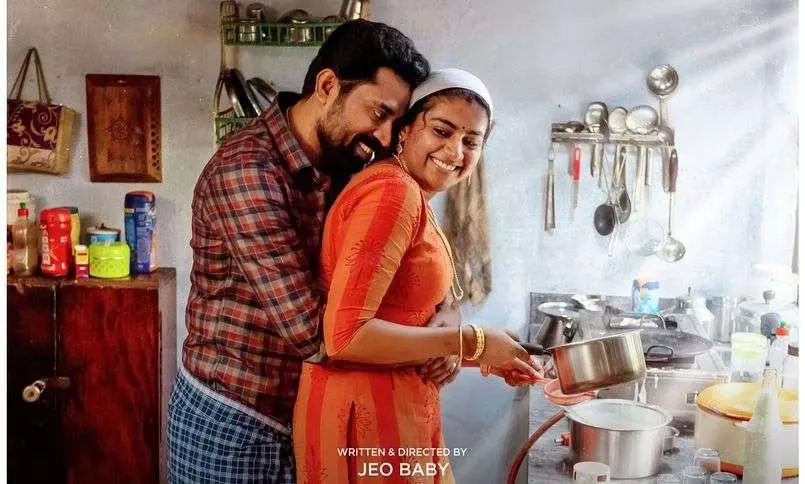

The Great Indian Kitchen: A story of small agonies
text_fieldsYou'd be forgiven for thinking that Jeo Baby's 'The Great Indian Kitchen' is about food. There are long and detailed shots of meticulous kitchen preparations by anonymous brown and (always) female hands. The film traverses through the life of an anonymous housewife (Nimisha Sajayan) who struggles to balance her household's traditionalism with her own notions of dignity and freedom.
Where is the rebellion in this film? Not until the very end. The entire film is the drudgery of the lowest kind, depicting in minute detail the silent lives of housewives, the ladies who make meals, wash clothes, clean your leftovers and the house. While the men like her husband (Suraj in a subtly menacing and indifferent avatar) take relaxing yoga sessions, the housewife goes from a girl with dreams of dancing and employment to a robot that is chained to the kitchen and mop bucket. And the viewer is chained along with her. We witness it all.
Even as her husband has sex with her at night, the housewife is haunted by thoughts of decaying leftovers, fly-ridden scraps and a sink slowly filling with foul water, a metaphor for her own frustrations with her unfulfilling life. It is this choice of raw, close up footage by both director and cinematographer Salu K Thomas that brings home the true state of her life. Sajayan is good in her role, her anger slowly coming through cracks as she eventually lashes out.
At one particularly poignant point in the film, Sajayan's character requests her husband for foreplay as sex hurts her - to which she is met with sneering disapproval. This reinforces her status as a service object that cooks, cleans and provides occasional sexual favours. There are many scenes like this which hammer home the status of women in such traditional households and also show how women themselves participate in perpetuating this oppression.
Perhaps what is most striking about the film is its direct attack on menstrual customs and the dehumanisation of women with periods which they link to the Sabarimala agitations, pointing out society's hostility to such simple biological functions.
There is no grand BGM, no stirring musical score, no impassioned speeches. The closest we get is Sajayan's character yelling at her brother to go get water on his own. And yet the film manages to be effective for its natural progression and lack of theatrics. However, this may make the audience feel that the last dance scene as somewhat too loud compared to the subtlety of the rest of the film.
It should be noted that the film's technical crew contains many women perhaps giving the film it's "women gaze". Including that fact, and it's "Thank Science" in the credits, 'The Great Indian Kitchen' takes the focus to the everyday woman - the real great Indian kitchens - the nation over.




